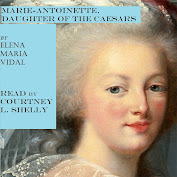A scholarly view. From Nature:
There are several studies into monastic scriptoria for women (Bischoff, 1966, Parkes, 1983, Robinson, 1997, Hamburger, 2016) starting with Bernhard Bischoff’s famous study of Chelles in France (Bischoff, 1966). The contributions of the Birgittine nuns of Vadstena alongside the brothers is explored in scholarly literature (Hedström, 2009, Dverstorp, 2010). Others cast a wider net to cover regions in selected centuries, from the eighth century to 1500 (McKitterick, 1992, Brown, 2001, Beach, 2004, Cyrus, 2009, Lifshitz, 2014). These studies together with a few, isolated pieces of evidence such as a contemporary illustration (Fig. 1) and archaeological finds (Radini, Trom et al. 2019) show that manuscript production in female religious institutions or female participation in lay workshops occurred in different periods and in different geographical areas. Women’s contributions as scribes are explored and attested in scholarly literature (Blanton et al. 2013; 2015; 2018; Saunders and Watts, 2023) as well as more popular essays and initiatives (e.g. Davis, 2018, Hudson, 2021). However, there is a knowledge gap: Despite the emerging field of quantitative codicology (Chandna et al. 2016), to date no study has tried to quantify the female scribe contribution. The role of female scribes in the Latin West during the Middle Ages has been defined within specific geographical or chronological delimitations only. This allows for in-depth analysis of the available source material, but not broad-scale conclusions. The aim of this paper is to address the research question: What was the quantitative contribution of female scribes based on available sources? How large was the fraction of the manuscripts copied by women? To provide a tentative answer to this question we conduct the to our knowledge first bibliometric analysis of the contribution of female scribes. We perform the study using colophons. (Read more.)
More HERE.

















No comments:
Post a Comment